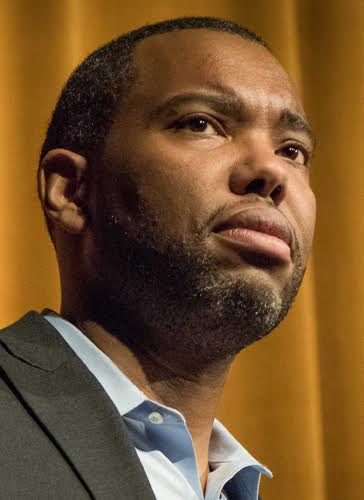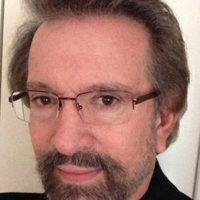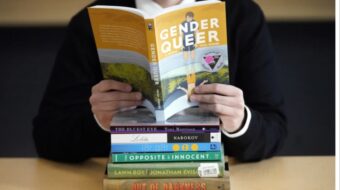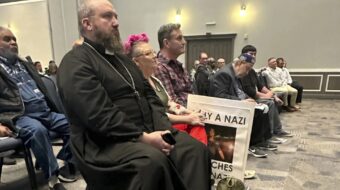
An American Big Bang burst forth 400 years ago. The selling into slavery of West African human beings was the cataclysmic 17th-century eruption that gave rise to our country’s diseased myths about race. Necrotic archetypes careening out of this disastrous maelstrom of human misery have lodged themselves deep within our nation’s consciousness.
In his new book, “Between the World and Me,” Ta-Nehesi Coates, national correspondent for The Atlantic magazine, uses the literary conceit of a letter to his pre-adolescent son to write a masterwork on the real life-and-death challenges of being black in modern-day America. The result: One of the great writers of our time commits to taking ownership of his personalized narrative on race, a quest that, as the reader discovers, is subject to continuing revision.
In interviews, Coates has revealed that after completing the provocative and controversial cover story “The Case for Reparations” for the Atlantic’s June 2014 issue, an assiduously researched treatise, he began to yearn for a more immediate, emotionally based project. A year later, Mr. Coates’ “Between the World and Me” vibrates with electrifying primal feeling, buttressed by the workings of an always searching, transcendent intellect operating at full throttle.
Fear is a main character in his journey, viscerally injecting itself into his internal experience, just as it infects the goings-on in the world outside, a dangerous universe seething with tormenting contradictions. Those expecting to find a hopeful father-to-son saga of ultimate victory and redemption will not have their wish granted. But so dense with the deepest of psychic insights are these pages, one is beseeched to reread the author’s words again and again in order to wring out as much of their meaning as possible – a far greater reward indeed.
Coates grew up on Baltimore’s west side, a working-class district with a predominantly African American population. His father, a research librarian and a founding member of the city’s Black Panther Party, metes out strict and often physical discipline to his growing son. Ta-Nehisi explains to his son a likely reason for his grandfather’s frightening approach: “Black people love their children with a kind of obsession. I think we would like to kill you ourselves before seeing you killed by the streets that America made.”
Is the parent’s hand that strikes his son’s body in the grip of the fearsome echoes of the past, raining down blows in hopes of protecting his son from what looms in his future? Some readers may recall a scene in Baltimore during the recent civil unrest following the brutal murder of Freddie Gray at the hands of the city’s police: An angry (or panic stricken?) mother was filmed landing a haymaker on her adolescent son’s head as she chased the boy away from the dangers of the street, illustrating perhaps the extreme reactivity arising under duress from a parent’s abject terror for her child. What is abundantly clear is that existing in a permanent and historic state of siege exacts an incalculable toll on humanity.
A sixth-grade moment in time, just after school, is jarringly etched as Coates sees a boy pull a gun on a “boy, who was standing next to me.” The boy with the gun does not pull the trigger and is quickly spirited away from the terrifying scene by his cronies, but in the slow motion blink of an eye it is brought home just how vulnerable Ta-Nehisi’s eleven-year-old body is to the randomness of the violence in his environment.
“I remember,” he writes, “being amazed that death could so easily rise up from the nothing of a boyish afternoon.” Over time, the rolling thunder of the ever-present danger of Coates’ West Baltimore heightened his senses to such a degree that he could all but smell the air of the springtime “killing season” in his neighborhood.
When Ta-Nehisi enters Howard University, a central thematic construct presents itself: It’s the search for a deeper understanding of himself and of his place in the inspiring cosmopolitan social order of a major black university. Also suddenly present is the epiphany that visits the young freshman who is living away from home for the first time — “the pursuit of knowing,” the seeds of which were instilled in him during childhood by both of his parents, which now represents a heretofore unknown freedom. Revealed to him is “the right to declare your own curiosities and follow them through all manner of books,” and the delicious realization that that freedom was his for the taking.
As he finds himself catapulted into this heady evolutionary stage, he declares, “The classroom” is “a jail of other people’s interests.” To his great delight the Moorland-Spingarn Research Center at Howard University, the library where Ta-Nehesi’s father spent his professional life, contains one of the largest collections of Africana in the world!
The “dream” is the vehicle by which Coates details his analysis of our nation’s cancerous structural racism. He explains that “race is the child of racism, not the father. And the process of naming the ‘people’ has never been a matter of genealogy and physiognomy so much as one of hierarchy.”
Individuals at the top of this hierarchy, those identifying themselves as a part of white society, he explains, cannot exist in their superior socio-economic role without the counterweight of black people occupying their place at the bottom – victims to be blamed, limited, abused and/or killed for being who and where they are.
“Between the World and Me” occupies the most rarefied of places. In its 152 pages lie deep revolutionary truth, sensitivity and mastery.
Between the World and Me
By Ta-Nehisi Coates
Publisher: Spiegel & Grau (July 14, 2015)
Available in hardcover (176 pages) and Kindle editions.
Photo: Ta-Nehisi Coates by Eduardo Montes-Bradley. Licensed under CC BY-SA 4.0 via Commons.

MOST POPULAR TODAY


Zionist organizations leading campaign to stop ceasefire resolutions in D.C. area

High Court essentially bans demonstrations, freedom of assembly in Deep South

Afghanistan’s socialist years: The promising future killed off by U.S. imperialism

Communist Karol Cariola elected president of Chile’s legislature






Comments